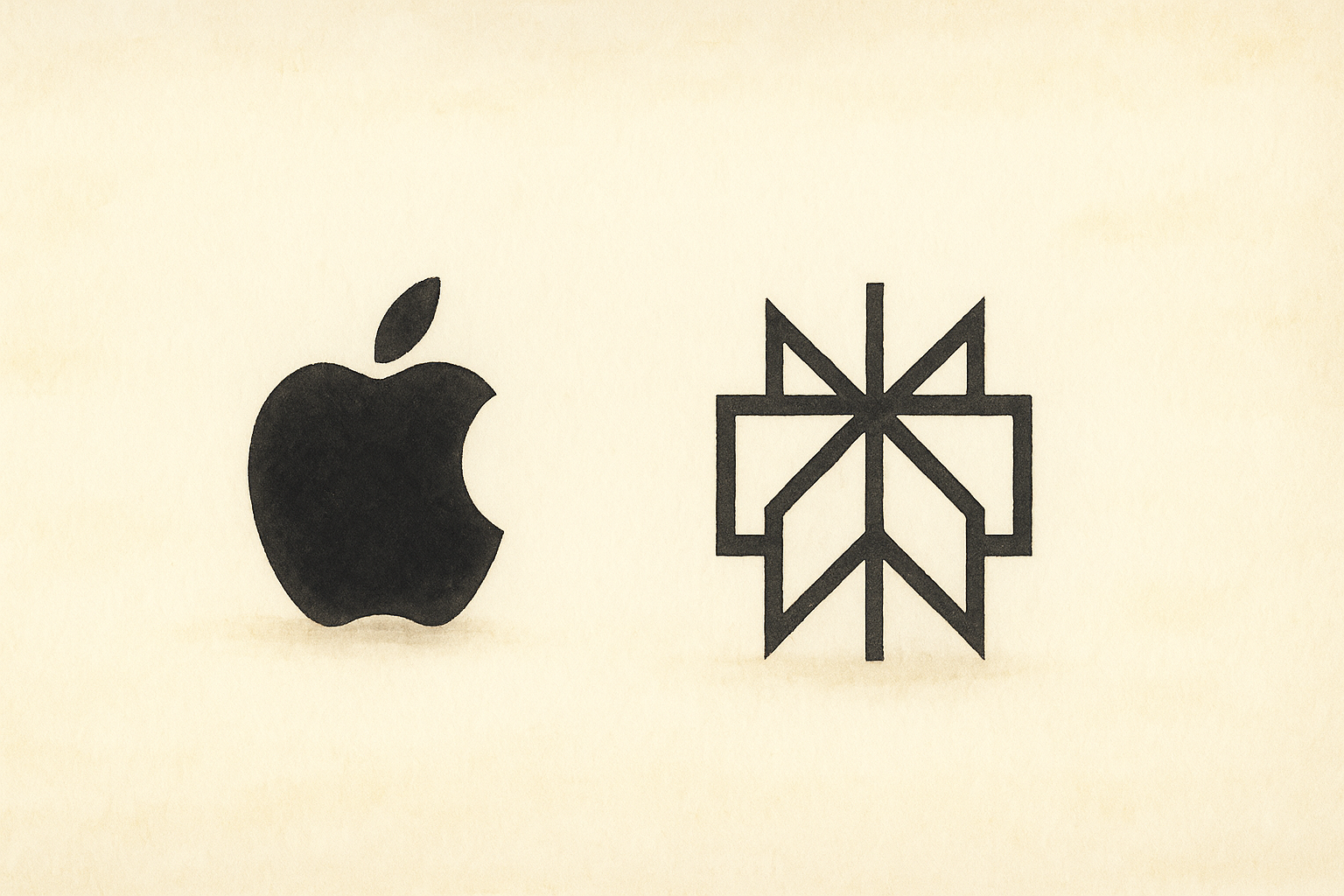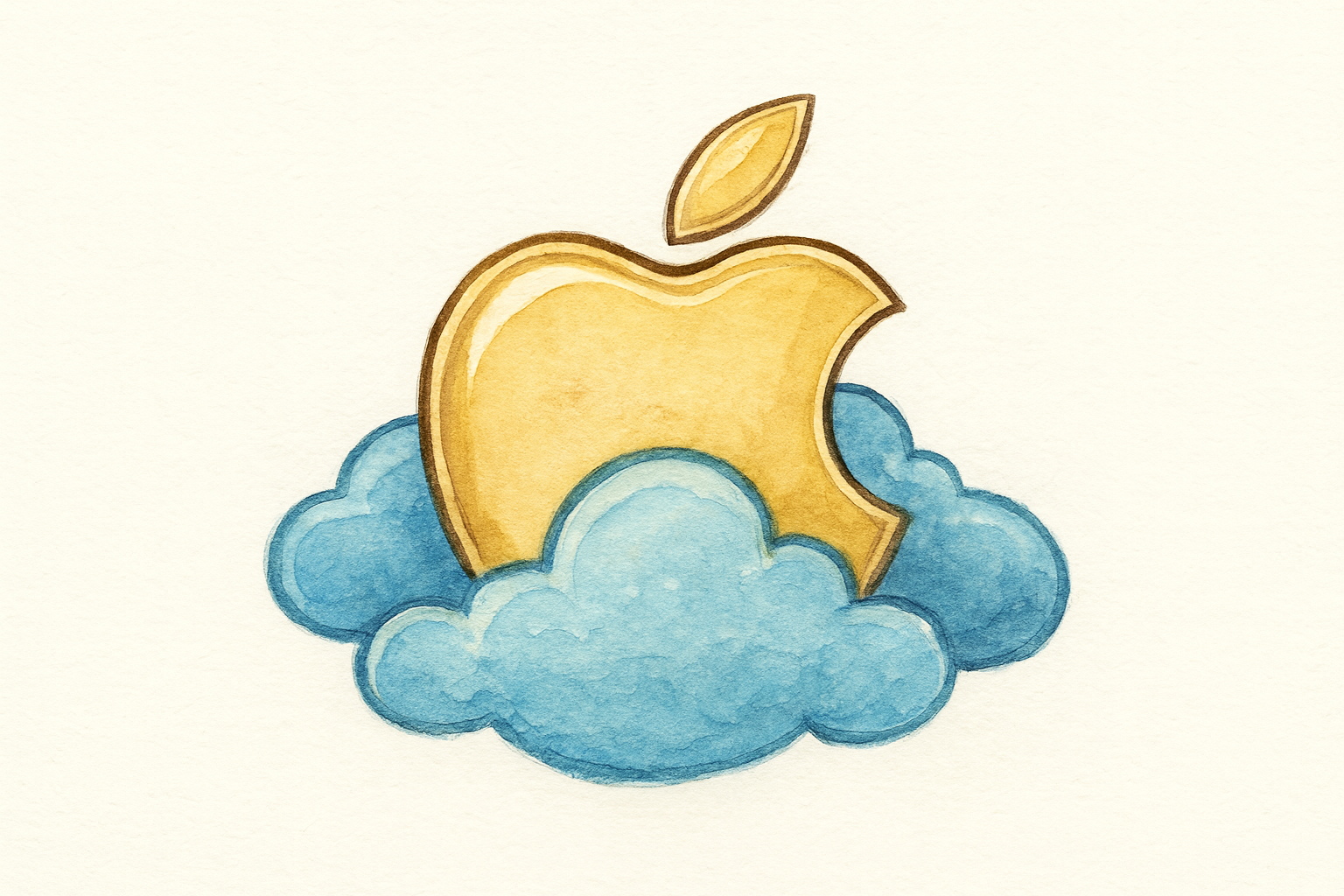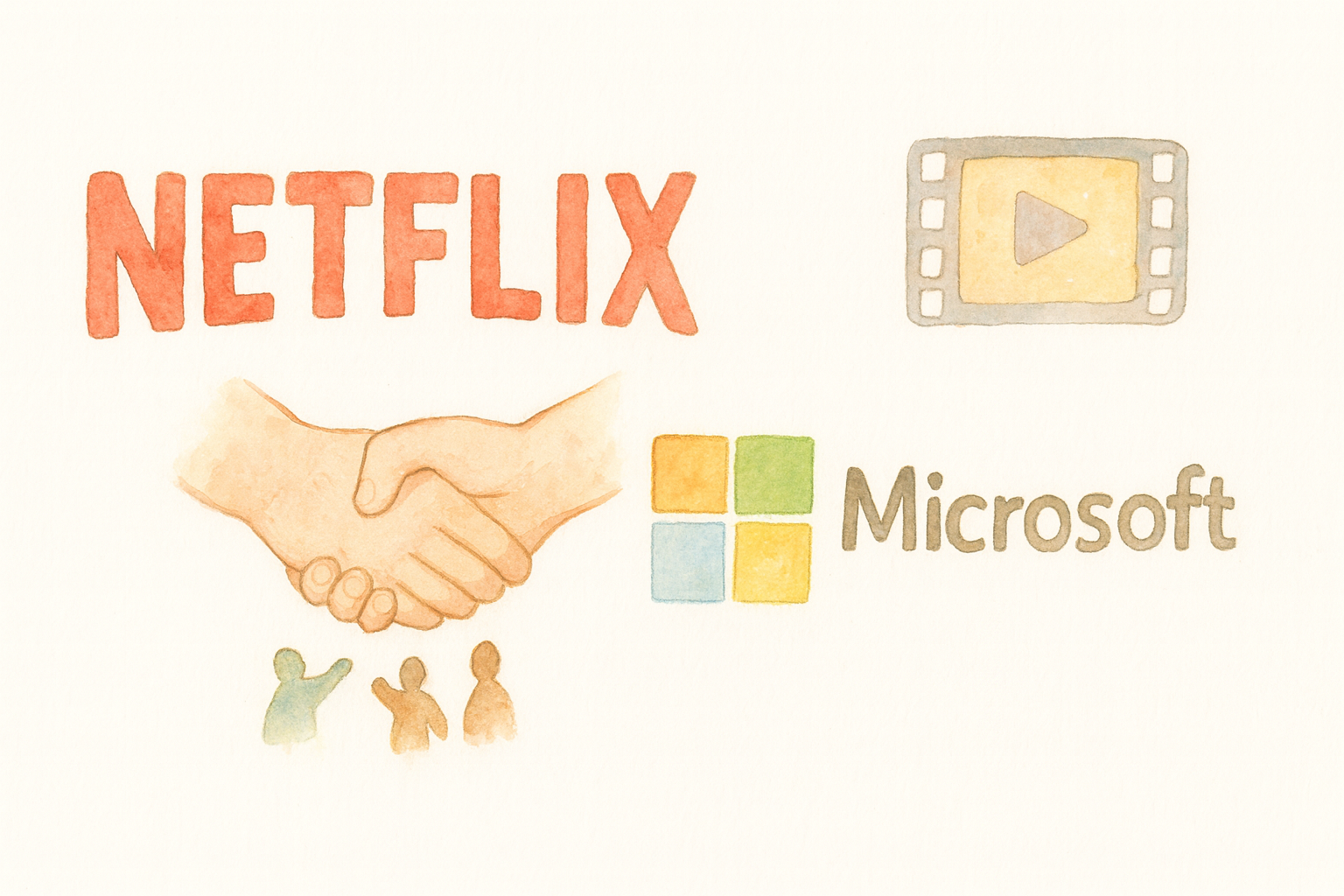All blogs · Written by Ajitesh
Apple PM Interview: Should Apple Launch Its Own Search Engine?

Apple PM Interview: Should Apple Launch Its Own Search Engine?
Welcome to the fourth edition of PM Interview Prep Weekly! I’m Ajitesh, and this week we’re tackling one of the most fascinating strategic dilemmas in tech: Apple’s search engine decision.
The Context
Strategy questions are one of the oddest PM interview question types. They’re inherently ambiguous and force you to make calls among countless possible choices, outcomes, and uncertainties. That’s what makes them such a tough cookie.
Early in my PM career, I didn’t get why strategy mattered. Why not just ship features? Working at Google taught me that a list of 10 features neither inspires teams nor secures executive buy-in. A compelling vision does both.
The best strategy decisions keep executives up at night. Apple’s search engine dilemma question is as real as it gets.
The setup: Apple collects $15-20 billion annually from Google—pure profit for keeping Google as Safari’s default search. That’s 5% of Apple’s total profit, no work required.
The threat: This cozy arrangement faces existential risks. The DOJ is using this deal as Exhibit A against Google. Meanwhile, AI is rewriting the rules—users now want ChatGPT-style answers, not blue links.
It’s said that Apple has been “six months away” from launching search for about five years now. But 2025 was different—they seriously discussed acquiring Perplexity ($7B valuation). This wasn’t another rumor. This was Apple considering war with Google.
My Google colleagues always said search is eternal and competitive. The LLM shift from lists to answers proved them right. Apple has everything: 2 billion devices, the privacy brand, $60+ billion in cash. But do they have the conviction to walk away from $20 billion in guaranteed annual revenue?
Today, we’re diving deep into this strategic dilemma: Should Apple launch its own search engine?
My Learning About Product Strategy in Real-Life
Before we dive into the case, let me share three things I’ve learned about strategy working at BigTech that remain relevant for solving PM strategy questions.
1. Think in Years, Not Quarters
My manager told me this and it has stayed with me: “Anything strategic in Google or BigTech context happens in years.” Pixel has been 5+ years in the making. Google Cloud 10+ years. Apple’s search decision isn’t about next quarter’s earnings—it’s about whether they have appetite for this play over a long horizon.
2. Find the Asymmetric Bet
Head-to-head competition or me-too strategies benefit no one. There’s clear economics and real-life backing to this. When Facebook copied Reels from TikTok, they didn’t just copy—they put their own twist on it. For most PM strategy questions, like in real life, me-too isn’t the right option.
3. Timing Matters
The same data management proposal that failed at Google a year ago succeeded when my manager pitched it two years later. He brought his expertise, of course, but the key difference was timing. AI was at the cusp, data volumes had exploded, and Google Cloud was growing at 50%. This confluence of factors made the investment in data management infrastructure suddenly attractive. As PMs, timing isn’t just about when to launch—it’s about reading when the market, technology, and organization align for your strategy.
Approach to Solving PM Strategy Questions
PM Strategy questions can be vague and abstract, covering everything from market entry to growth and expansion. After years of trial and error—and watching countless candidates struggle with these questions—I’ve landed on a flexible framework that balances structure with creative thinking.
This approach crystallized while observing my manager at Google write strategy docs. In every meeting where we debated what to build, he’d structure the discussion the same way. First, he’d write “Why”—analyzing market forces, what AWS was doing, what are the tech trends etc. Then he’d distill everything into a single line: “What we’ll do.” Finally, he’d outline “How” we’d execute, which we’d refine over multiple iterations.
The final strategy paper would have polished section titles, rich data analysis, and executive-friendly formatting. But the starting point was always this simple framework: Why, What, How. It gave us permission to start simple, collect disparate data points, and gradually shape them into a coherent strategy.
I then started applying this to PM Strategy questions when conducting interviews at Google, and found it to work really well. I call it the “Why, What, How” framework:
- Why: Insights from analysis of market forces (customers, competition, company, trends)
- What: A compelling product vision with 3 major strategic pillars
- How: Concrete features to showcase how this vision can be executed
This approach provides structure while leaving room for creative thinking. Let me demonstrate with Apple’s search engine dilemma.
The Case
Interviewer: “You’re a Senior PM at Apple. Tim Cook has asked you to evaluate whether Apple should launch its own search engine. What’s your recommendation?”
My Solution Using the Why, What, How Framework
Step 1: Clarifying Questions
First, let me share my understanding of the context:
Search is an incredibly competitive market where Google has 90%+ share. Apple currently collects $15-20 billion annually from Google—pure profit without any operational burden. If Apple enters this space, we’re talking about significant investment: billions in capex, thousands of hires, patent acquisitions, and years of iteration to build competitive technology.
The market is experiencing a fundamental shift. AI is transforming search from a list of blue links to conversational answer engines—think ChatGPT and Perplexity. This disruption creates an opening for new entrants. Additionally, the DOJ antitrust case against Google specifically targets the Apple-Google deal, putting our $20B revenue stream at risk.
Given this context, I have two key clarifying questions:
-
Timeline: What’s our strategic horizon—3 years or 5+ years? Search requires long-term thinking. (Assume: 3-year horizon for initial strategy)
-
Investment Commitment: Is Apple prepared for the reality of search? We’re looking at $10B+ investment over multiple years, thousands of specialized hires, and potentially years before seeing returns—all while risking our Google revenue. Do we have board-level commitment for this scale of investment? (Assume: Yes, if the strategic case is compelling)
My assumption on strategic goals: Given the DOJ case and AI disruption, I assume our objective is dual-fold: achieve $20B revenue replacement within 3 years while positioning Apple for long-term success in AI-powered search.
(Interviewer: “Yes, exactly. Please proceed with your analysis.“)
Step 2: WHY - Analyze Market Forces for Strategic Insights
Let me analyze the key market forces:
Customer Segments & Needs:
- Size: 5B+ internet users globally, 1B+ Safari users directly addressable
- Pain Points: Ad-heavy results, privacy concerns, SEO spam, desire for direct answers vs links
- Willingness to Pay: Growing segment (largely on iOS) willing to pay for privacy (Signal, ProtonMail success)
- Emerging Behavior: Users increasingly prefer conversational AI (ChatGPT has 100M+ users)
Competition Analysis:
- Google: 90%+ market share, but vulnerable due to ad-based model conflicts
- Microsoft Bing: There for a long but still couldn’t take advantage of AI wave
- New Entrants: Perplexity is showing AI-first search can attract customers but doesn’t have sustainable advantage over Google either in tech or distribution
- Key Insight: No major player has successfully combined privacy + ecosystem integration + AI
Company Strengths & Weaknesses:
- Strengths: 2B+ devices for distribution, unmatched privacy brand, $60B+ cash, Safari with 1B+ users, ability to process on-device
- Weaknesses: No search infrastructure, limited AI/LLM capabilities, no search talent pool
- Unique Asset: Only company that can build search without ads due to hardware margins
Technology & Market Trends:
- AI Disruption: Search shifting from “10 blue links” to answering engine
- Privacy Regulations: GDPR, DMA creating tailwinds for privacy-first approaches
- On-device ML: Apple’s chips enable private, on-device processing Google can’t match
- Antitrust: DOJ case makes Google deal unsustainable regardless of Apple’s preference
Strategic Insights from Analysis:
- Traditional search is being disrupted by AI - perfect entry timing
- Apple’s privacy + on-device capabilities create unique differentiation opportunity
- Regulatory pressure means status quo isn’t an option - must act proactively
Step 3: WHAT - Product Vision and Strategic Pillars
Recommendation: YES, Apple should build its own search/intelligence platform. The DOJ case threatens our $20B revenue stream, and controlling search is critical for the future of iOS.
Strategic Pillars:
- Build Capability Fast: Acquire talent & technology (biggest execution risk)
- Win on Differentiation: Privacy, AI-first intelligence
- Leverage Distribution Advantage: Definitely one shot replacement of Google as default search isn’t right answer
Note: The depth of execution details below depends on interviewer interest. I’ll provide strategic overview with ability to dive deeper on any pillar.
Step 4: HOW - Concrete Features and Execution Plan
Pillar 1: Build Capability Fast
Acquire new-age search engine such as Perplexity:
- Instant access to 200+ search engineers and working answer engine tech
- Much faster than building from scratch
- Alternative approaches (build: too slow, 5+ years; partner: doesn’t solve dependency)
Additional moves:
- Establish search labs near Google/Microsoft campuses
- Offer 2-3x compensation for key hires
- Acquire 2-3 specialized AI startups
Pillar 2: Win on Differentiation - Privacy-First AI Intelligence
Core differentiation strategy:
- On-device processing: Leverage Apple Silicon for private, local search personalization
- No ad tracking: Search results based on intent, not behavioral profiling
- Ecosystem integration: Universal search across all Apple devices and services
- AI-native experience: Conversational interface via enhanced Siri, not just blue links
- Curated quality: Fewer but better results, similar to Apple’s app store philosophy
This is our asymmetric bet—redefining search as a private, intelligent assistant rather than an ad delivery mechanism.
Pillar 3: Leverage Distribution Advantage
Four strategic decisions for distribution:
-
Retire the Siri brand: Despite years of investment, Siri carries negative associations that would handicap our search efforts. This launch needs fresh start.
-
Perfect mobile-first experience: Our 1B+ iPhone users search differently on mobile—voice queries, camera searches, quick gestures. We’ll optimize for these mobile-native behaviors first, including enhanced voice search and visual search capabilities, before expanding to desktop.
-
Maintain user choice: Don’t force as the default search engine. Users can easily switch between search providers, just as they can today. This preserves customer choice and avoids regulatory scrutiny.
-
Execute major marketing campaign: This launch demands Apple’s full marketing support. Unlike utility apps (Health, Alarm, etc) that can launch quietly, entering search requires making a statement about our commitment and capabilities to both users and the industry.
Note: Once you’ve outlined the strategy, it’s always a good idea to discuss a few key risks and go deeper if the interviewer shows interest.
Key Risks:
- Google retaliation → Gradual transition, professional relationship
- Technical complexity → Perplexity acquisition might face regulatory uncertainty
- User adoption → Start with privacy-conscious segments
This concludes our PM Strategy case study. The interviewer might ask follow-up questions diving deeper into technical complexity, user adoption curves, or revenue projections.
Key Takeaways from This Case
- Disruption creates opportunity: AI transforming search from links to answers gives Apple a rare chance to enter a dominated market.
- Build vs. Buy is critical: The Perplexity acquisition option shows sophisticated thinking—sometimes $7B to jumpstart is better than 5 years building from scratch.
- Differentiation must be fundamental: Privacy alone isn’t enough. Apple needs to reimagine search, not just make a private Google.
Common Pitfalls to Avoid in This Case
- Ignoring the $20B elephant: Some candidates propose building search without addressing how to replace this massive revenue stream.
- Competing head-to-head with Google: Suggesting Apple can beat Google at their own game after 20+ years of refinement is naive.
- Privacy as only differentiator: While important, privacy alone won’t make users switch from Google.
- All-or-nothing thinking: Not considering a gradual transition or hybrid approach with Google.
Practice This Case
Want to try this strategy case yourself with an AI interviewer that challenges your thinking and provides detailed feedback?
Practice here: Tough Tongue AI - Apple Search Engine Strategy
The AI interviewer will push you on your assumptions, challenge your financial models, and test whether you can think strategically about complex trade-offs—just like a real Apple interviewer would.
Further Reading
Read more about PM Strategy questions I have explored before:
- A Simple Approach to PM Strategy Questions - Framework for strategy cases with examples
- Product Strategy Questions - Sample PM strategy question with answer
- Apple Cloud Infrastructure Strategy - Sample PM strategy question with answer
- New, Exclusive PM Strategy Questions - Collection of 6 real-world PM strategy case studies
PM Tool of the Week: Screen Studio
As PMs, we live in demos—whether it’s showcasing a new feature to stakeholders or creating quick how-to videos for the team. This week, I’m sharing Screen Studio—a macOS screen recorder that makes your product demos look ridiculously professional with little effort.
Here’s why it’s helpful:
- Auto-zoom magic: Automatically zooms in on your cursor actions, making complex workflows crystal clear even on mobile screens
- Instant polish: Adds smooth cursor movements, gradients, and backgrounds that make even rough prototypes look production-ready
- Export for anywhere: One-click optimization for Slack GIFs, Twitter videos, or stakeholder presentations
I’ve been using Screen Studio for a long time now. I often get asked, “Where do you get these rich-looking GIFs?” The secret is this particular tool.
Got a PM tool that’s saving your sanity? Hit reply and tell me about it!
How would you approach Apple’s search dilemma? What unique angle would you bring? Hit reply—I love hearing different perspectives on these strategic challenges!
About PM Interview Prep Weekly
Every Monday, get one complete PM case study with:
- Detailed solution walkthrough from an ex-Google PM perspective
- AI interview partner to practice with
- Insights on what interviewers actually look for
- Real examples from FAANG interviews
No fluff. No outdated advice. Just practical prep that works.
— Ajitesh
CEO & Co-founder, Tough Tongue AI
Ex-Google PM (Gemini)
LinkedIn | Twitter
P.S. A special thank you to my former manager at Google, who taught me almost everything I know about product strategy. As an early-career PM in BigTech, you rarely get exposed to high-level strategic thinking—it’s something you learn by working alongside senior PMs who’ve spent decades implementing and iterating on different strategies. I’m deeply grateful for the opportunity to learn from someone with decades of experience navigating complex strategic decisions. The frameworks, the long-term thinking, and the emphasis on timing that I share in this blog all come from watching him shape strategy at Google.
Here’s the thing: many of these senior folks who are brilliant at strategy don’t write blogs or seek the limelight. They’re too busy actually building and shipping products. But trust me, they’re the absolute best ones to learn from if you get the chance. The second best? Well, you’re reading it right now. 😉
To all the senior PMs out there mentoring junior colleagues: your impact extends far beyond the products you build.



